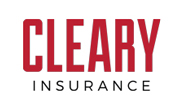Insurance for Your College Student

Renters Insurance
So you’ve kicked off your kid’s college career with a new laptop and some other expensive high-tech gadgets. Now it’s time to follow up to ensure his or her property is safe in the event of theft, fire or other mishap.
In general, protecting a student’s personal property boils down to a simple rule: If your child is living on campus and going to school full time, your homeowners, renters or condo insurance policy (including liability protection) will cover his or her gear. But if he or she moves off campus, your policy most likely won’t protect his or her assets. Ditto if your students starts taking fewer classes.
Kids who change their permanent home addresses on such legal documents as driver’s licenses or tax returns (say, to qualify for in-state tuition at a public university) are no longer considered official parts of your household. They’ll need their own renters insurance. Students who rent a shared apartment will need insurance, too, but be aware that they might have a tough time getting it. That’s because insurers might not sell a policy to a student unless everyone in the household has his or her own policy, too.
Auto coverage
Congratulations if your college student left the car at home. You might have some savings coming to you. But to get it, your student’s school needs to be at least 100 miles away. If you meet this criterion, give your insurer a call. You’ll generally receive about 10 percent off your premium.
Did your child leave with the car? It is important to call your insurance broker and discuss your options. The insurance carrier could conceivably raise your rates if the vehicle’s moved to a different location.
Interest Rates and Their Effect on Investing
 As a result of the prolonged Federal Reserve’s involvement in stimulating the economy, interest rates are and have been at extreme lows. Over the course of the next five to ten years, the Fed is expected to pull back its control in a way which will allow rates to increase, having an inevitable effect on the markets as a whole. As a result, portfolios heavy in bonds may experience poor performance in the market during periods of rising interest rates. When rates in the open market are offering higher credited rates to lenders, investors tend to sell their existing debt, resulting in falling prices. Longer term debt is particularly more sensitive to interest rate risk, and this, as well as debt quality, will all want to be considerations when discussing with clients and/or prospective clients
As a result of the prolonged Federal Reserve’s involvement in stimulating the economy, interest rates are and have been at extreme lows. Over the course of the next five to ten years, the Fed is expected to pull back its control in a way which will allow rates to increase, having an inevitable effect on the markets as a whole. As a result, portfolios heavy in bonds may experience poor performance in the market during periods of rising interest rates. When rates in the open market are offering higher credited rates to lenders, investors tend to sell their existing debt, resulting in falling prices. Longer term debt is particularly more sensitive to interest rate risk, and this, as well as debt quality, will all want to be considerations when discussing with clients and/or prospective clients
Likewise, rising rates can have a negative effect on the Consumer Cyclical sector, as the fact that the general public will tend to have less discretionary spending money due to more expensive borrowing and potential price hikes. However, investing in bank equities can be attractive in anticipation of these times, as they are able to finance out at more profitable margins.
New OSHA Incident Reporting Rules
Effective January 1, 2017; certain employers are required to  electronically submit injury and illness data that they already record on paper and retain onsite. Electronic date will enable OSHA to quickly analyze injury data and use its enforcement and assistance resources more efficiently. The data will also be available to the public. OSHA believes that allowing for public disclosure on incident reporting will encourage employers to improve on workplace safety and provide invaluable information for job seekers, customers and the general public.
electronically submit injury and illness data that they already record on paper and retain onsite. Electronic date will enable OSHA to quickly analyze injury data and use its enforcement and assistance resources more efficiently. The data will also be available to the public. OSHA believes that allowing for public disclosure on incident reporting will encourage employers to improve on workplace safety and provide invaluable information for job seekers, customers and the general public.
The reporting requirement will be phased in over two years. The timeline depends on the number of employees, but generally speaking employers must submit information from 2016 on form 300A by July 1, 2017. The same employers will need to submit Information from 2017 using forms 300A, 300, and 301 by July 1, 2018. Beginning in 2019 and thereafter all information must be submitted by March 2.
You can view which establishments are effected by the new reporting rule by clicking here.
